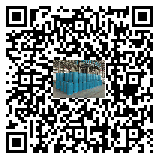Dispersant: Unlocking the "brilliant code" of water-based metallic color powder
In the wave of environmentally friendly water-based coatings, the brilliant luster of metallic color powder
(aluminum powder, copper powder, pearl powder, etc.) has become the face value of automobiles, 3C products,
cosmetic packaging and other fields. However, the high surface energy of metallic pigments can easily lead to
agglomeration and sedimentation, turning "bright and colorful" into "mottled and colorful". As a key auxiliary agent,
dispersant is playing the role of "behind-the-scenes director" to make metallic color powder show its ultimate charm.
1. The "agglomeration dilemma" of metallic color powder
The particle size of metallic pigments is usually between 5-50μm, and its high specific surface area
(aluminum powder reaches 1.5-2.5m²/gmakes the van der Waals force between particles significant. In water-based systems,
polar water molecules are more likely to induce metal particles to agglomerate and form a "grape bunch" structure.
Undispersed aluminum powder agglomerateswill not only cause particle defects in the coating film, but are also likely to
clog the spray gun, reducing the coating efficiency by more than 40%.
2. The "depolymerization magic" of dispersants
Dispersants solve the agglomeration problem through a triple mechanism of action:
Electrostatic repulsion
Anionic dispersants (such as polyacrylic acid derivatives) dissociate carboxyl groups (-COO⁻) in water, making the metal particle
surface carry the same charge and forming an electrostatic repulsion layer. Experiments show that when the absolute value of the
Zeta potential exceeds 30mV, the dispersion stability of aluminum powder can be improved by 80%.
Steric hindrance
The comb-like structure of polymer dispersants (molecular weight>5000) forms a "buffer" on the metal surface, physically blocking
the approach of particles. In a certain automotive paint formula, after adding 0.8% hyperbranched polyester dispersant, the
sedimentation rate of aluminum powder slowed down by 75%.
Wetting and penetration
Dispersants reduce the surface tension of the liquid (to below 25mN/m) and promote the wetting of the resin on the metal particles.
In the dispersion of pearlescent pigments, the wetting time is shortened from 45 seconds to 8 seconds to ensure that the pigment is
fully developed.
3. The "golden rule" of precise formulation
HLB value matching
The hydrophilic-lipophilic balance (HLB) of the dispersant needs to be compatible with the resin system. For water-based acrylic resin
(HLB≈12), it is advisable to use a dispersant with HLB=10-14 to ensure interfacial compatibility.
Molecular weight regulation
Low molecular weight dispersants (<2000) are suitable for low viscosity coatings, while high molecular weight dispersants (>10000)
are more suitable for high solid systems. An industrial paint manufacturer increased the hiding power of aluminum powder by 15%
through a molecular weight gradient experiment.
Synergistic enhancement
Dispersants are often used in combination with wetting agents (to reduce interfacial tension) and defoamers
(to eliminate grinding foam). In 3C product UV coatings, the ternary compounding system reduces the fineness of metal color
paste from 45μm to 12μm.
4. "Brilliant interpretation" of four major application scenarios
Automotive metallic paint
Nano-grade aluminum powder (particle size <50nm) is easy to agglomerate in water-based systems. The polymer dispersant makes
the paint film gloss reach more than 95% through the steric hindrance effect, meeting the "mirror effect" requirements of luxury cars.
Cosmetic packaging
Pearlescent pigments (mica-wrapped TiO₂) need to be evenly dispersed in water-based inks. Modified polyurethane dispersants give
packaging materials an "iris effect" and enhance the visual appeal of the brand.
3D printing consumables
The dispersion stability of metal powders (such as stainless steel powders) in water-based binders directly affects the printing accuracy.
Dispersants containing hydroxyl functional groups reduce the powder sedimentation rate by 60% and reduce printing layer defects.
Conductive coatings
The dispersion of silver powder in water-based systems directly affects the conductive properties. By optimizing the dispersant structure,
a company reduced the surface resistivity of the coating from 10⁶Ω/□ to 10⁴Ω/□, meeting the needs of flexible electronics.


